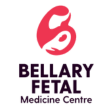Dr Rashmi Aravind Patel
MD Radiodiagnosis
Fellowship in Fetal Medicine (BFMC)
Consultant at Bellary Fetal Medicine Centre
What is DNA storage?
DNA extraction is the process of isolating DNA from the cells of an organism isolated from a sample, typically a biological sample such as blood, saliva, or tissue (placental/ fetal)
It involves breaking open the cells, removing proteins and other contaminants, and purifying the DNA so that it is free of other cellular components
The purified DNA can then be used for downstream applications such as Chromosomal microarray, Clinical exome, and other gene mutation studies
Why is a prenatal sample better than a postnatal sample?
- DNA extraction and storage requires deoxyribonucleic acid (DNA) to be extracted from either the placenta or autopsy tissue for molecular testing. However, the sources and quality of DNA obtained are highly variable
- In the fetal cohort, the placenta had the highest proportion of high-quality DNA samples (93.1%), and the liver had the lowest proportion (35.3%
- There was a statistically significant deterioration in DNA quality with the prolonged time interval between demise and autopsy (≥5 days)
sika A, Gallagher R, Williams M, Joy C, Lowe E, Price G, Webb L, Marquart L, Pelecanos A, Harraway J, Venter DJ, Armes JE. DNA extraction from placental, fetal, and neonatal tissue at autopsy: what organ to sample for DNA in the genomic era? Pathology. 2019 Dec;51(7):705-710. doi: 10.1016/j.pathol.2019.09.001. Epub 2019 Oct 18. PMID: 31635948.
Case 1
Mrs. P, 24yrs
O Positive blood group, Consanguinous marriage
G3P3D3,
G1 – Twins
One died at VIMS, Ballari after 5 months
The other twin was taken to Indira Gandhi Institue in Bangalore – and died at 5 months, however, DNA was stored
G3 – Present pregnancy
Was referred at 8 weeks for genetic evaluation
Genetic counseling was done
Clinical exome sequencing was done on the stored DNA of the previous baby – which showed a homozygous mutation

- Counseled regarding the recurrence risk
- Trio Sanger sequencing was performed for the fetus and parents
- At 13 weeks – CVS was performed, placental tissue was sent for Sanger sequencing along with maternal blood for Maternal Cell Contamination
- A parental blood sample was sent to confirm the parental carrier status
Take home messages
- DNA storage is a simple and inexpensive test that can be done in children affected with genetic syndrome/ when structural abnormalities are noted on antenatal scan
- DNA storage helps in genetic evaluation and helps us offer prenatal diagnosis in subsequent pregnancies in case a mutation is established
Thank you

